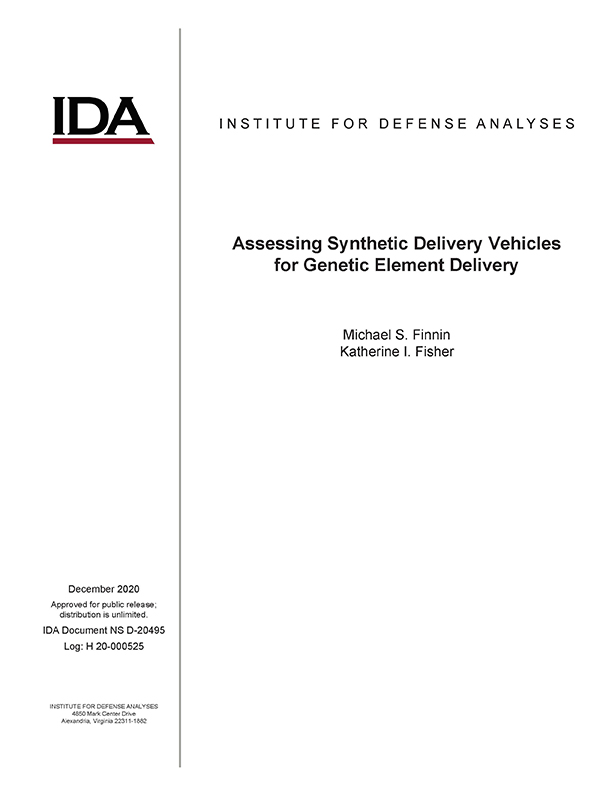Assessing Synthetic Delivery Vehicles for Genetic Element Delivery
December, 2020
IDA document: D-20495
FFRDC: Systems and Analyses Center
Type: Documents
Division: Science and Technology Division,
Science, Systems and Sustainment Division
Authors:
IDA document: D-20495
FFRDC: Systems and Analyses Center
Type: Documents
Division: Science and Technology Division
Authors:
Authors
Michael S. Finnin, Katherine I. Fisher
See more authors

